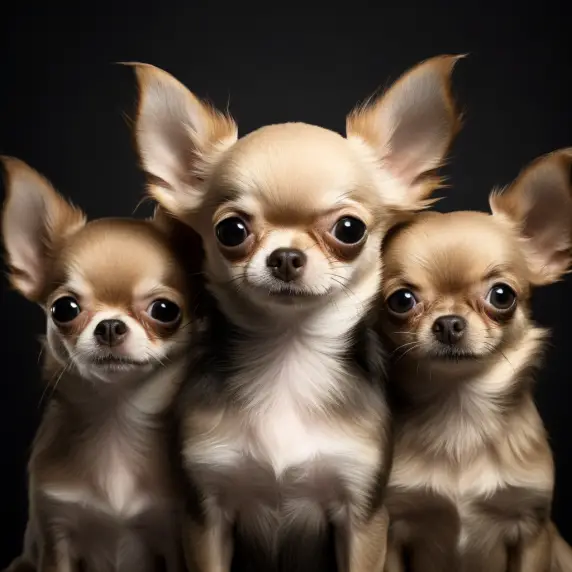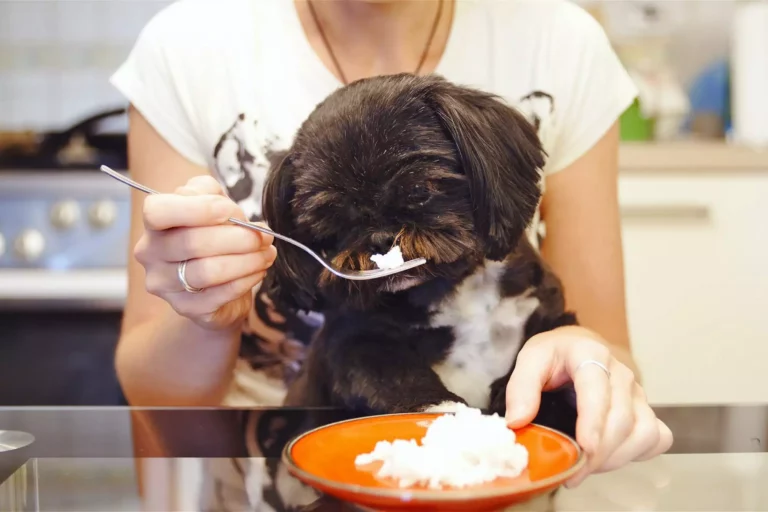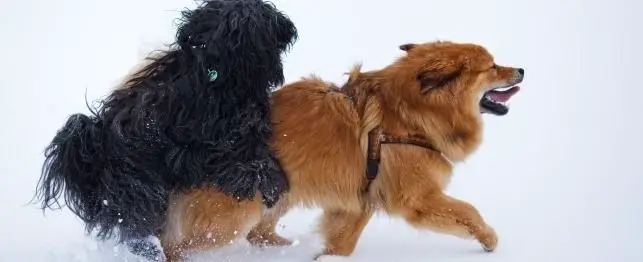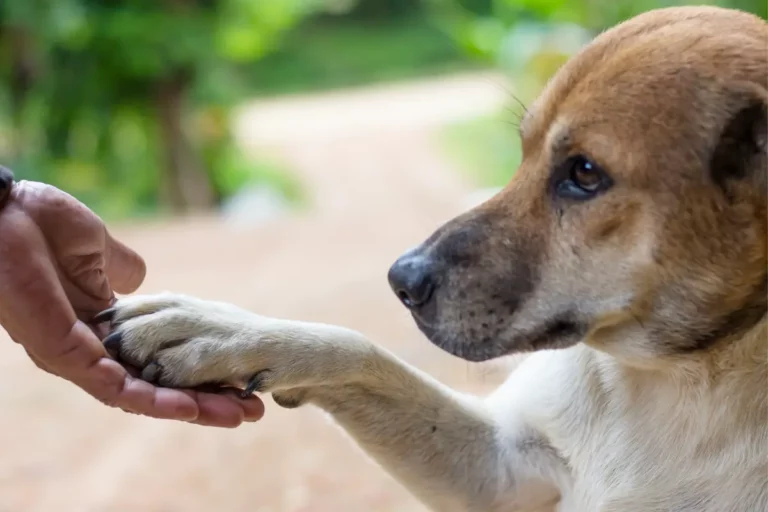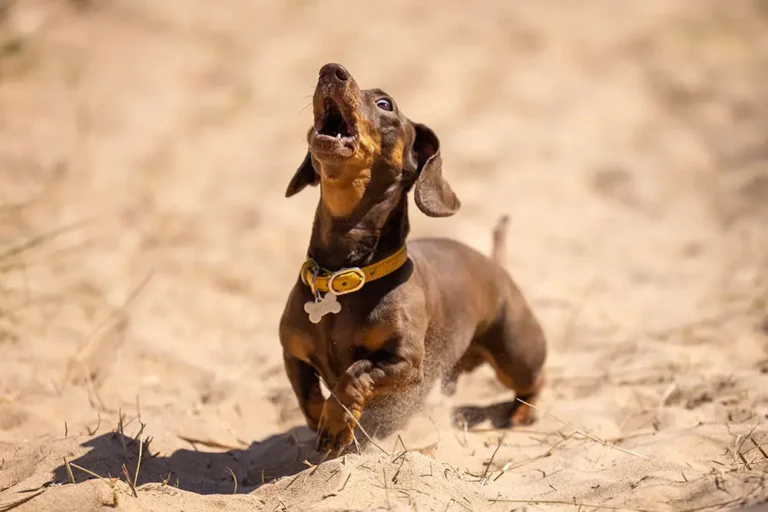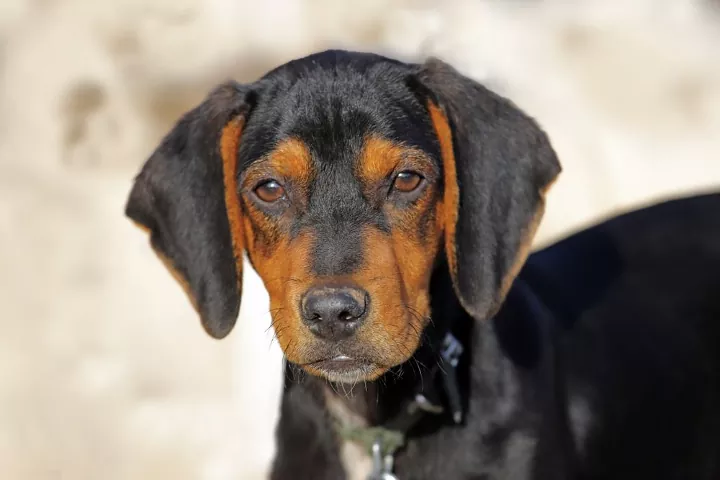Dog Occiput: All About This Bump on a Dog’s Heads
Every dog owner is familiar with the various quirks and features of their furry companion. One such feature that often goes unnoticed, yet is common to many breeds, is the dog occiput. This distinct bump on the top of a dog’s head, located between the ears, has intrigued pet parents and veterinarians alike.
But what exactly is the dog occiput, and why do some dogs have it while others don’t? Let’s dive into the world of canine anatomy and uncover the mysteries behind this unique feature.
Key Takeaways:
- The occiput is a noticeable bump on the back of a dog’s skull.
- Its prominence varies across different dog breeds.
- It has anatomical and evolutionary significance.
Short Answer: The dog occiput, often referred to as the “knowledge bump’ or “smart bump,” is a prominent bone at the back of the skull between the dog’s ears. Its presence varies among breeds, serving both structural and functional purposes in a dog’s anatomy. While it’s a natural part of many dogs’ skull structure, its size and prominence can differ depending on the breed and individual dog.
Exploring the Dog Occiput: Anatomy and Purpose
The occiput, for those new to the term, might seem like a peculiar feature on dogs. However, this part of a dog’s anatomy has its role and significance. Let’s delve deeper.
Anatomy of the Occiput
The occiput is located at the back of the dog’s skull, almost right between the ears. It’s the point where the skull bone transitions to the spine. This bone prominence is more easily felt than seen and is particularly evident in certain breeds.
Why Do Dogs Have an Occiput?
- Structural Role: The occipital bone, which constitutes the occiput, plays a significant role in connecting the dog’s skull to its spinal column. This connection is made via the foramen magnum, a large opening where the spinal cord passes through.
- Muscular Attachment: The area around the occiput serves as an attachment point for muscles, especially those involved in neck movement. The trapezius and brachiocephalicus muscles, for example, connect here, facilitating various head and neck movements.
- Protective Function: The occiput acts as a protective shield for parts of the brain. Its pronounced structure in certain breeds might also act as an added cushion during activities or minor collisions.
- Breed Standard: For certain breeds, the presence of a prominent occiput is part of the breed standard. It adds to the distinctive profile and appearance of breeds like Bloodhounds and Golden Retrievers.
Understanding the occiput’s anatomy and its purpose gives us insights into the evolutionary and functional adaptations of dogs over time. Whether you’re a curious dog owner or an aspiring veterinarian, recognizing the significance of this bone prominence helps in appreciating the intricate design of a dog’s anatomy.
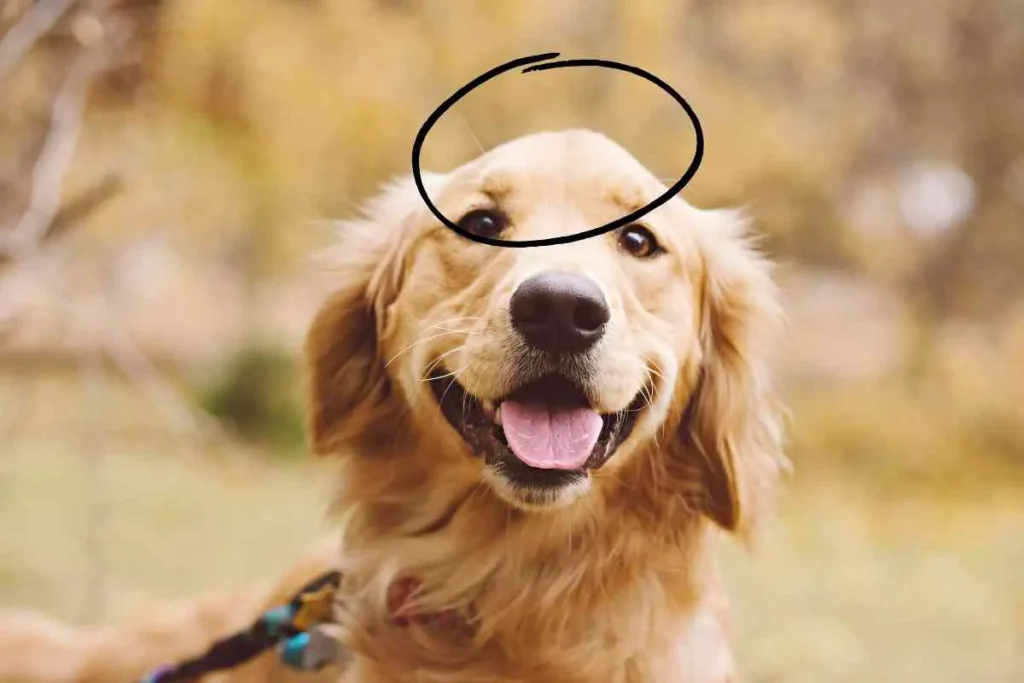
Changes in the Occiput: Causes and Concerns
When pet owners notice a change in their dog’s physical features, it’s natural to be concerned. One such noticeable change can be the size or prominence of the occiput. Understanding the reasons behind these changes can offer peace of mind or guide necessary interventions.
Why Is My Dog’s Occiput Getting Bigger?
It’s not uncommon for pet owners to suddenly become aware of the prominence of their dog’s occiput, leading them to wonder if it has grown. Several factors might be at play:
- Growth and Development: Puppies and younger dogs are still growing. As they mature, certain physical features become more pronounced, including the occiput. This growth is natural and usually tapers off as the dog reaches its full size.
- Breed Characteristics: Some breeds naturally have a more pronounced occiput as they age. What might seem like sudden growth is often just a manifestation of breed-specific traits becoming more apparent.
- Weight Loss or Muscle Atrophy: If a dog loses weight or experiences muscle atrophy around the neck or head, the occiput can appear larger simply because surrounding tissues have decreased.
- Medical Conditions: Certain medical issues, although rare, might cause the occiput or surrounding areas to swell. Always consult with a veterinarian if you suspect a health-related cause.
Bump on Dogs Head Between Ears
This area often causes confusion. While the occiput is located between the ears, not all bumps in this area are the occiput. Some dogs might develop cysts, benign tumors, or other growths in this region.
It’s crucial to differentiate between a natural occiput and an abnormal growth, especially if the bump appears suddenly or changes over time.
Hard Bump on Top of Dogs Head
If you’re feeling a hard bump on the top of your dog’s head that’s not the occiput, it’s essential to be cautious. Causes can range from harmless fatty tumors (lipomas) to more concerning issues like bone tumors or abscesses.
While it’s possible that it’s a normal anatomical variation or a harmless growth, any new, hard, or rapidly growing bumps should be evaluated by a veterinarian to rule out potential health concerns.
Being informed about these aspects of the dog’s skull not only enhances our understanding but ensures we provide the best care when changes occur. Whether it’s just a natural growth or something requiring medical attention, awareness is the first step.
The Occiput Across Different Breeds
The fascinating world of canine genetics and breeding has given rise to a wide variety of dog breeds, each with its unique physical attributes. The occiput, that small bump at the back of a dog’s skull, is a feature that varies in prominence across breeds.
Here’s how it presents in the diverse canine kingdom.
Occiput Dog Breeds
Many dog breeds possess a noticeable occiput, but in some, it’s particularly prominent due to the breed’s skull structure. These breeds include:
- Bloodhounds: Known for their keen sense of smell and droopy ears, bloodhounds also sport a pronounced occiput.
- Golden Retrievers: This beloved breed has a gentle curve to its skull, making the occiput stand out.
- Basset Hounds: With their elongated face and droopy eyes, the basset’s occiput is another distinguishing feature.
- German Shepherds: Their alert and attentive nature is complemented by a slightly raised occiput.
- Afghan Hounds: Their regal appearance is accentuated by a noticeable occiput, adding to their distinctive silhouette.
While these are just a few examples, many breeds have a visible occiput, contributing to the breed’s unique profile.
Do All Dogs Have an Occiput?
The straightforward answer is yes, all dogs have an occiput. It’s a standard anatomical feature found in every dog, irrespective of the breed. However, the prominence of the occiput varies.
In some dogs, it’s so subtle that it’s hard to detect just by looking or feeling, especially if covered by a thick fur coat. In others, as mentioned above, it’s a standout feature.
Though all dogs have this bony protrusion, the reasons for its varying prominence lie in the history of breeding and the purposes for which different breeds were developed. Over generations of selective breeding for specific traits, some breeds have retained or accentuated this feature more than others.
In the end, whether pronounced or subtle, the occiput is a part of what makes each dog unique and is a testament to the rich tapestry of canine genetics and evolution.
Care and Interaction with the Occiput
The occiput, while a small feature, plays a role in a dog’s overall well-being. As dog owners, knowing how to care for and interact with this part of our furry friend’s anatomy can offer additional ways to bond and ensure their comfort.
Let’s explore some popular methods related to the occiput.
Occiput Dog Massage
Massaging the occiput can be a soothing experience for dogs. Here’s why and how you can do it:
Benefits:
- Relaxation: Gentle massaging can release tension and offer relaxation, especially if your dog is anxious or has been active.
- Bonding Time: Touch is a powerful bonding tool between pets and their owners. Regular gentle massages can strengthen your bond.
- Improved Blood Flow: Massaging can stimulate blood flow to the region, which can be beneficial post-injury or in older dogs.
Techniques:
- Gentle Circles: With your dog in a relaxed position, place your fingertips on the occiput and move in soft, circular motions.
- Light Pressure: Apply light pressure with the palm of your hand, pushing gently and then releasing.
- Extended Strokes: Start from the base of the head and move towards the occiput, using long, gentle strokes.
Precautions:
- Always ensure your dog is comfortable with any massage technique you’re trying.
- Never apply too much pressure or force, as this can cause discomfort or injury.
- If your dog shows any signs of pain or discomfort, stop immediately.
Smart Bump on Dogs
There’s a longstanding myth in some circles that a prominent occiput, often referred to as the “smart bump”, indicates a dog’s intelligence. However, this belief doesn’t have any scientific backing.
- Debunking the Myth: The size or prominence of the occiput has no correlation with a dog’s intelligence or cognitive abilities. Instead, it’s more related to breed, genetics, and individual variation.
- The Real Measure of Intelligence: Canine intelligence is multifaceted, encompassing problem-solving abilities, learning rate, memory, and more. It cannot be determined by a simple physical feature.
In conclusion, while it’s fun to ponder these myths, it’s crucial to remember that every dog, regardless of the size of their occiput, has its unique intelligence and abilities. The best way to understand your dog’s capabilities is through interaction, training, and observation.
We’ll explore these myths surrounding a dog’s occiput in more detail below.
Debunking Myths Surrounding the Occiput
The occiput, while an intriguing part of canine anatomy, is surrounded by myths and misconceptions. These tales, often passed down through generations or circulated in pet forums, can sometimes overshadow the real facts. Let’s dive into these myths, clear up any confusion, and set the record straight.
Separating Fact from Fiction
Understanding the occiput requires us to discern between scientific facts and commonly held beliefs. Here, we’ll dissect some of the most popular myths and provide accurate information.
Myth 1: A Prominent Occiput Indicates Higher Intelligence
Reality: As mentioned earlier, the size or prominence of the occiput does not correlate with a dog’s intelligence. Intelligence in dogs is a blend of genetics, environment, training, and individual variability. It’s not something that can be determined by any single physical feature.
Myth 2: Only Certain Dog Breeds Have an Occiput
Reality: All dogs have an occiput. However, in some breeds, it’s more prominent and easy to feel or see. Its prominence is linked more to genetics and breed characteristics than to any specific function or trait.
Myth 3: Massaging the Occiput Can Improve a Dog’s Intelligence
Reality: While massaging the occiput might be relaxing and beneficial for the dog’s well-being, it does not have any effect on their cognitive abilities or intelligence. It can, however, be a great bonding experience and provide comfort to the dog.
Myth 4: A Growing Occiput Indicates a Health Issue
Reality: While sudden growths or lumps should always be checked by a vet, the occiput itself is a natural part of the dog’s skull. Its size might change as the dog grows, but it should remain consistent in adulthood. If you notice any unusual growths or changes, consult with a veterinarian.
Common Misconceptions About the Occiput and Its Function
Besides the myths, there are also misconceptions about the occiput’s function. Some believe it plays a role in dog’s vision or hearing, while others think it’s a vestigial structure without any real purpose.
Reality: The occiput serves primarily as a point of attachment for several muscles that assist in head movement. It’s an essential part of the canine skeletal structure and, while not directly linked to senses like vision or hearing, plays a crucial role in the dog’s overall anatomy.
In essence, while the occiput might be a topic of many stories and tales, understanding its actual purpose and dismissing unfounded myths can lead to better care and appreciation of our canine companions.
Frequently Asked Questions on a Dog’s Occiput
What dog breeds have an occiput?
Many dog breeds have a noticeable occiput, but it’s particularly prominent in breeds such as Bloodhounds, Golden Retrievers, and King Charles Spaniels.
What is the bump on the top of a dog’s skull?
The bump on the top of a dog’s skull is called the occiput or occipital protuberance. It’s a part of the skull where certain neck muscles attach.
What causes lumps to suddenly appear on a dog?
While the occiput is a natural part of a dog’s anatomy, sudden lumps could be caused by various factors, including insect bites, abscesses, tumors, or cysts. Always consult with a veterinarian if you’re concerned about a new or changing lump on your dog.
What is the hard bump on my dog’s head?
If the bump is located at the back of the skull, it’s likely the occiput. However, if you’re noticing a hard lump elsewhere or if there are sudden changes to its size or appearance, it’s essential to consult with a vet.
Is a prominent occiput a sign of a specific breed?
While certain breeds like Bloodhounds or Golden Retrievers might have a more noticeable occiput, its presence alone doesn’t determine a dog’s breed. Genetic testing or breed identification through other means would be more accurate.
Can the occiput indicate a dog’s health status?
The occiput itself typically doesn’t indicate health status. However, sudden changes in its size, appearance, or if it becomes painful for the dog, can be a sign of health issues and should be evaluated by a vet.
How is the occiput linked to a dog’s sense of balance?
The occiput isn’t directly linked to balance. Instead, the inner ear primarily handles a dog’s balance. However, the occiput does provide attachment for muscles that aid in head and neck movement.
What should I do if I notice a sudden change in my dog’s occiput size?
Any sudden changes in your dog’s anatomy, including the occiput, warrant a visit to the veterinarian. It’s essential to rule out potential health issues or concerns.
Are there any treatments or procedures related to the occiput?
In general, the occiput itself doesn’t require any treatments or procedures. However, if there’s an injury or health concern related to the area, treatments would be based on the specific issue at hand. Always consult with a veterinarian regarding any concerns.
Final Thoughts
The occiput, often mistakenly referred to as just a “bump” on a dog’s head, holds more significance than many pet owners realize. While it’s a natural part of a dog’s anatomy, its prominence can vary among breeds, leading to curiosity and sometimes concern.
By understanding the occiput’s anatomy, purpose, and variations across breeds, dog owners can better appreciate this unique feature and ensure their furry friends are in optimal health.
Always remember, any sudden changes or concerns about your dog’s head or any other part of their anatomy should be addressed with a professional veterinarian to ensure their well-being.
With knowledge and attentive care, we can continue to strengthen our bond with our canine companions, cherishing every head pat and gentle touch.
Additional Resources
For those eager to dive deeper into understanding the intricacies of canine anatomy and the nuances of the occiput, below are some recommended resources:
- “Canine Anatomy 101” – An illustrated guide offering detailed insight into the structural makeup of dogs.
- “The Dog’s Head: From Nose to Neck” – A comprehensive book focusing on the head’s anatomy, including the occiput.
- VetMed Resource Center – An online platform providing articles, videos, and courses on various veterinary topics.
- “Understanding Canine Body Language” – This resource touches upon how the structure of a dog, including features like the occiput, can play a role in their body language.
- The International Association of Animal Massage & Bodywork – For those interested in the therapeutic side, this association offers courses, including those on canine head and neck massage techniques.
These resources serve as a foundation for further exploration. As always, when it comes to specific concerns or queries about your pet, consulting with a veterinarian or canine anatomy expert is paramount.

